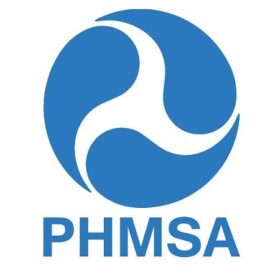
The Interstate Natural Gas Association of America (“INGAA) submits these comments regarding the EPA proposed “Tailoring Rule”. Under the Proposed Rule, greenhouse gas (“GHG”) emissions by some stationary sources would be regulated through Prevention of Significant Deterioration (“PSD”) and Title V permits issued under the Clean Air Act (“CAA”). A new stationary source would be subject to PSD and Title V permitting if its GHG emissions exceed the proposed major source applicability threshold of 25,000 tons per year (“TPY”). A modification to an existing source would be subject to PSD permitting for GHGs if the resulting net increase in GHG emissions exceeds an as yet undetermined significance level proposed to be between 10,000 and 25,000 TPY.
The Proposed Rule threatens to cripple transmission pipeline development and expansion because the analysis underlying the eligibility and significance levels grossly underestimates the number of facilities that would remain subject to PSD and Title V permitting. The transmission grid depends on over 1,500 compressor stations, containing over 6,000 natural gas-fired engines and 1,000 natural gas-fired combustion turbines. According to figures EPA cited in the notice of proposed rulemaking for the GHG Reporting Rule, at the proposed 25,000 tpy eligibility level approximately 45 percent of these compressor stations would be “major sources,” subject to PSD and Title V regulation for GHGs. A survey of INGAA members reveals an even greater level of exposure. Of recently constructed compressor stations, 72 percent would have been “major for GHGs” under the Proposed Rule, and of recent compressor station modifications, PSD permits for GHGs would have been required for between 60 percent and 71 of the projects, depending on the significance level. To a substantial degree, this unanticipated and devastating level of permit exposure traces to drawing the proposed eligibility and significance thresholds from other federal and state programs, many involving reporting rather than permitting, rather than a careful analysis of potential projects, likely increases in permitting caseload, and the potential for permit processing gridlock.
Exposing 70 percent of the nation’s transmission pipeline compressor stations to PSD and Title V permitting virtually guarantees that critically needed projects will be delayed, disrupted or not built at all. Transmission pipelines are highly capitallâ€intensive, and their construction and modification requires a complex and interrelated set of financial and commercial obligations tied to project milestones and innâ€service dates. Transmission pipeline construction and modification is also subject to pervasive regulation, including environmental permitting oversight, by the Federal Energy Regulatory Commission. Regulatory compliance generates an additional set of requirements and deadlines, further complicating project schedules.
The Proposed Rule would derail these projects by subjecting them to PSD permitting by state authorities that will be facing a wave of new applications with no precedent to guide them. All compressor station projects will be delayed; many will be disrupted; a few will be canceled altogether; and the overall objectives of climate change policy will suffer as a result.
INGAA believes that U.S. climate change policy is best established through federal legislation, not by trying to regulate GHGs under the CAA or any other existing statute. Without retreating from that belief, the enormous potential impact of the Proposed Rule compels INGAA to address its merits.
The state PSD and Ttitle V administrators do not have the workforce; the training; or, in the majority of cases, the legal authority and framework to start regulating GHGs pursuant to the CAA. They are urging EPA to delay implementation of the Proposed Rule for two years, and INGAA supports their request. If EPA rejects the state administrators’ plea, EPA should defer PSD and Title V regulation of GHGs until at least the fall of 2011, consistent with a proper reading of EPA’s policy on when a pollutant becomes “subject to regulation” under the CAA.
The Proposed Rule should also be narrowed. EPA should adopt a grandfathering clause to exempt projects that have administratively complete PSD and minor permit applications pending when these GHG regulations go into effect. Also, the eligibility and significance thresholds should either be redefined in terms on non-GHG pollutants or set significantly higher (eligibility at 150,000 TPY and significance at 50,000 TPY) to limit the number of projects exposed to permitting.
For projects that remain exposed to permitting, EPA should use empirically sound presumptions to minimize disruption. In particular, EPA should formally recognize and establish that for an efficiently designed, state of the art, natural gas combustion engine or turbine there currently is no commercially available control technology, and therefore no best available control technology (“BACT”) for GHGs.
Absent these measures, the Proposed Rule will expose over two-thirds of all interstate natural gas compressor station construction and modification projects to PSD regulation for GHGs, thus triggering delays, disruptions and cancellations of the very projects needed to allow natural gas to fulfill its central — in fact, indispensible — role in a lower carbon future.
Additional comments include remarks concerning the Proposed Rule’s “streamlining” measures, EPA’s plans concerning state implementation and support, and several technical matters. INGAA’s discussion of these items, as well as the more critical matters concerning deferral, exemption and presumptive BACT, is neither an express nor an implied retreat from its preference for addressing climate change through federal legislation. INGAA respectfully requests this be kept in mind during your consideration and deliberation.







